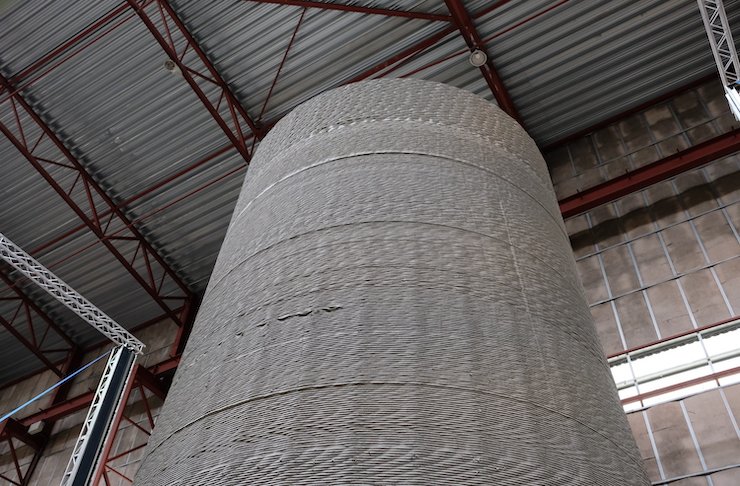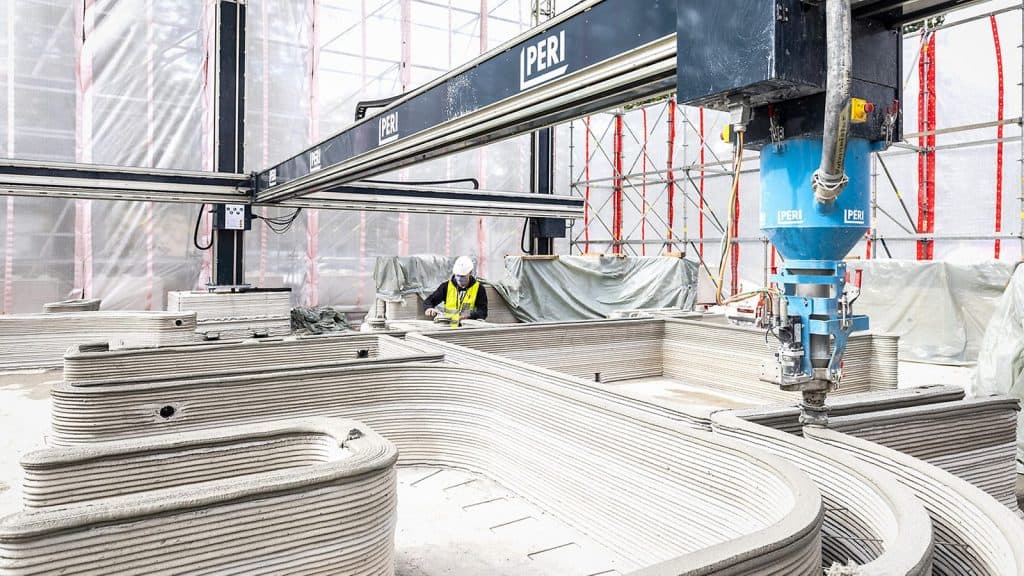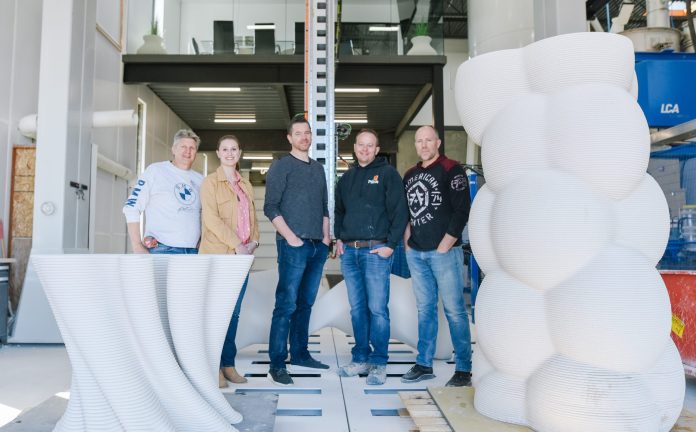GE is using concrete 3D printing to build record-tall wind turbine towers
Written by: Laura Griffiths
Publish Date: June 18, 2020


A collaboration between GE Renewable Energy, COBOD and LafargeHolcim is aiming to build record 200 metre tall wind turbine towers with 3D printed concrete bases.
Standing at up to double the height of current wind turbine towers, which are typically built in steel or precast concrete with a limited height of under 100 metres, these taller towers are designed to capture stronger winds and generate more energy at a reduced cost.
The multi-year collaboration will see COBOD's concrete 3D printing technology, the same used to build one of Europe's first additively manufactured buildings known as the BOD, used alongside tailor-made materials from LafargeHolcim to produce larger concrete bases on-site, eliminating logistical challenges and costs which have typically prohibited the use of precast concrete bases exceeding more than 4.5 metres. A 10 metre prototype pedestal was created in October last year.
Henrik Lund-Nielsen, founder of COBOD International A/S said: "With our groundbreaking 3D printing technology combined with the competence and resources of our partners, we are convinced that this disruptive move within the wind turbines industry will help drive lower costs and faster execution times, to benefit customers and lower the CO2 footprint from the production of energy."
Edelio Bermejo, Head of R&D for LafargeHolcim, added: "Concrete 3D printing is a very promising technology for us, as its incredible design flexibility expands the realm of construction possibilities. Being both a user and promoter of clean energy, we are delighted to be putting our material and design expertise to work in this groundbreaking project, enabling cost efficient construction of tall wind turbine towers and accelerating access to renewable energy."
The overall goal is to optimise renewable energy production and construction costs while lowering the Levelized Cost of Energy (LCOE). Typically, a 5 MW turbine at 80 metres is said to generate, yearly, 15.1 GWh. In comparison, the same turbine at double the height would generate 20.2 GWh, or more than 33% extra power.
Matteo Bellucci, Advanced Manufacturing Technology Leader for GE Renewable Energy, commented: "3D printing is in GE's DNA and we believe that Large Format Additive Manufacturing will bring disruptive potential to the Wind Industry. Concrete printing has advanced significantly over the last five years and we believe is getting closer to have real application in the industrial world. We are committed to taking full advantage of this technology both from the design flexibility it allows as well as for the logistic simplification it enables on such massive components."
About the Author
This article is written by Laura Griffiths
Read the original post here.


